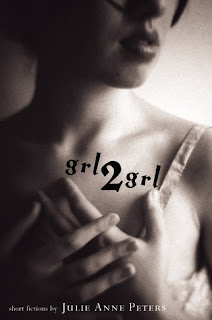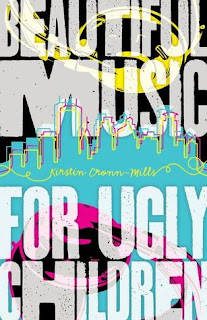A few years ago, I read Tinker Tailor Soldier Spy, by John LeCarre. It’s a spy novel—an excellent one, in fact, that swaps out running the bad guy down in a car with sifting through old records, showing just how unrealistic James Bond really is.
It also features a bisexual character named Bill Haydon.
This inclusion struck me as notable partially because the book was published in 1974 and partially because Haydon’s bisexuality is a significant part of the plot (which I’m about to spoil for you BIG TIME, by the way) without being portrayed as deviant in and of itself (mostly).
Seriously, these spoilers will ruin both the book and the movie, so turn away now if that’s a problem.
Bill Haydon is the spy in the title, the mole who’s giving British secrets to the Russians. The main character, George Smiley, is unable to see him as such because Haydon carried on an affair with Smiley’s wife, creating a blind spot of sorts for Smiley as he investigates the case (all depicted so beautifully in the 2011 film, by the way). But Haydon is also involved with Jim Prideaux, another agent who was tortured when his mission was blown by the Soviets—because of Haydon’s betrayal. In fact, I would argue that the relationship between Haydon and Prideaux is one of the most emotionally arresting in the novel.
 When I read Tinker Tailor Soldier Spy, I enjoyed seeing a bisexual villain whose villainy came from his political affiliations rather than his bisexuality. That being said, Haydon’s character still reveals some of the troubling attitudes about bi- and pansexuals, forty years after the book’s publication.
When I read Tinker Tailor Soldier Spy, I enjoyed seeing a bisexual villain whose villainy came from his political affiliations rather than his bisexuality. That being said, Haydon’s character still reveals some of the troubling attitudes about bi- and pansexuals, forty years after the book’s publication.Remember, Bill Haydon is a spy, a double agent who works both sides: Western and Russian, straight and gay. Was this connection made on purpose? I honestly don’t know. It’s never clearly stated whether Prideaux is bisexual as well, the way it is with Haydon, and so as much as I love this book, it still hints at that unsettling concept of the double-crossing bisexual.
It’s not an unfamiliar concept, either. Bisexuality inhabits a space on the LGBT spectrum that is at once too gay and too straight. While most people don’t assume bisexuals are international double agents (most of us don’t have lives nearly that interesting), people do accuse bisexuals of refusing to “pick a side.” To many, male bisexuality is a rest stop on the road to gayness, while female bisexuality is a detour on the path to heterosexuality. These attitudes often make it difficult to write about bisexuality because so many readers will make assumptions and ignore bisexuality as on option. Just as a bisexual woman in a relationship with a man will frequently have her identity called into question, bi- and pansexual characters in fiction often have their identities erased and replaced with the more easily categorizable “gay” or “straight.”
A character in one of my current WIPs is bisexual, and I’ve struggled with establishing this clearly in a way that won’t read simply as lesbian. Her sexuality is not a significant part of the plot—that is, this isn’t a book about being bisexual—but it is a significant part of her character. I suspect that may be where some of the difficulty lies. After all, I want her bisexuality to be there, but I don’t it to be a thing. Which, of course, is how bisexuality (and any other sexual identity) works in real life.
Fortunately, there are a handful of bisexual characters in fiction already out there! A great place to start if you’re interested is the Bisexual Books tumblr, which offers loads of reviews and resources about bisexuality in popular culture. I would also recommend L.R. Lam’s Pantomime. Now, she is a fellow Strange Chemistry author, but, to be clear, I’m recommending this as fan more than anything else. The main character’s bisexuality is included as a facet of his character in a lovely, subtle way. Malinda Lo is perhaps a more obvious example, but her latest book, Adaptation features a bisexual love triangle (something I’ve ALWAYS wanted to see!), and the main character of Ash has always read as bisexual to me as well. You can also go for more of a college assigned reading thing with Orlando, by Virginia Woolf, arguably one of the first novels to feature a bisexual character. Woolf gets around the restrictions of the time by making her main character switch genders, but the book w
 as based on a bisexual lover of Woolf’s and that definitely shines through in the text.
as based on a bisexual lover of Woolf’s and that definitely shines through in the text.Finally, one last interesting note: I learned while researching this post that Mystique from the X-Men was going to be written as bisexual! Unfortunately, this was during the early 80s, and depictions of homosexuality were banned in comics at the time. Thirty years on, such bans have (mostly) disappeared, and as we work to broaden the range of representation in literature, I hope to see more bi- and pansexuals in the future.

Fantastic post, Cassandra. Thank you for raising such excellent points!
Cassandra can be found at her website, goodreads, twitter, tumblr and facebook.
You can buy The Assassin's Curse here and The Pirate's Wish here. She has also written The Mad Scientist's Daughter and two shorts in the Assassin's Curse verse.


















My favourite pansexual character in fiction has to be Captain Jack Harkness in Doctor Who and Torchwood. I love the way he is presented and how even his openess about being interested in everyone is made into a little of a running joke it is also presented as very normal and not a deviant behavior.